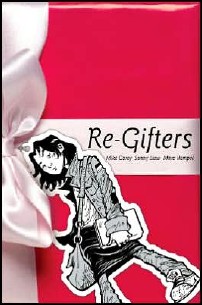The Writes Of Spring, by Dennis O’Neil
 As I sit down to write this, I’m less than five hours from midnight on March 23rd and so it might be appropriate to wish you a Happy Easter, or Happy Pasha if you’re an Oriental Christian, or Happy Purim. Or maybe I should give a shout-out to Aphrodite, Ashtoreth, Astarté, Demeter, Hathor, Ishtar, Kali, Ostara – all deities who were celebrated around the spring equinox and, as far as my extremely limited and unreliable knowledge goes, all of whom were connected to fertility, which figures: Spring equinox = end of winter = new life = let’s have a party.
As I sit down to write this, I’m less than five hours from midnight on March 23rd and so it might be appropriate to wish you a Happy Easter, or Happy Pasha if you’re an Oriental Christian, or Happy Purim. Or maybe I should give a shout-out to Aphrodite, Ashtoreth, Astarté, Demeter, Hathor, Ishtar, Kali, Ostara – all deities who were celebrated around the spring equinox and, as far as my extremely limited and unreliable knowledge goes, all of whom were connected to fertility, which figures: Spring equinox = end of winter = new life = let’s have a party.
Or…let’s let one stand for all and just celebrate the goddess whose name gives the holiday it’s name: No less an authority than The Venerable Bede, an early Christian scholar, wrote that Easter was named after the Saxon goddess Eostre, and if you can’t trust the Venerable Bede, well…
I like Easter, and tomorrow I may do something celebratory, even if it’s only to walk in the park down the road. (Yeah, us old guys really know how to tear it loose.) It’s a real holiday, as evidenced by all the ways it’s been celebrated over the millennia – see the goddess list above – and I think that means that it acknowledges and celebrates something deep in our collective culture, our life on this planet, probably our genomes. The catalogue of such holidays is short: there’s the various festivals of light that occur around the winter solstice – Merry Christmas, all – and around the fall equinox that generally involve harvests and eating, and Easter, et. al. All happen at seasonal changes and all involve the Basics: birth, death, light, dark, and survival.
You don’t have to believe in the literal truth of a mythology to accept the realities that underlie it.


 In today’s episode of Timothy Truman’s
In today’s episode of Timothy Truman’s 
 Last week, we were discussing the cons of continued stories, specifically what’s wrong with them, and we posited that they have a major problem in the difficulty new readers (or audiences) have in understanding the plot and characters. I said that there were remedies for this problem and now I’ll suggest, a bit timidly, that though remedies exist, nothing is foolproof.
Last week, we were discussing the cons of continued stories, specifically what’s wrong with them, and we posited that they have a major problem in the difficulty new readers (or audiences) have in understanding the plot and characters. I said that there were remedies for this problem and now I’ll suggest, a bit timidly, that though remedies exist, nothing is foolproof. For a lot of years I didn’t know much about Arnold Drake beyond some minimal biography: he was a first-generation comic book writer, he had written a movie or two. Then, last summer, we were thrown together for a public conversation at a small convention and for an hour I found Arnold to be charming, witty, a good raconteur, a treasury of information about the history of our medium, and way younger than his years. When we parted, Arnold gave me his card and we made vague noises about getting together in Manhattan, some time or other. We never did, and last week an email from Danny Fingeroth informed me that Arnold had died.
For a lot of years I didn’t know much about Arnold Drake beyond some minimal biography: he was a first-generation comic book writer, he had written a movie or two. Then, last summer, we were thrown together for a public conversation at a small convention and for an hour I found Arnold to be charming, witty, a good raconteur, a treasury of information about the history of our medium, and way younger than his years. When we parted, Arnold gave me his card and we made vague noises about getting together in Manhattan, some time or other. We never did, and last week an email from Danny Fingeroth informed me that Arnold had died.








